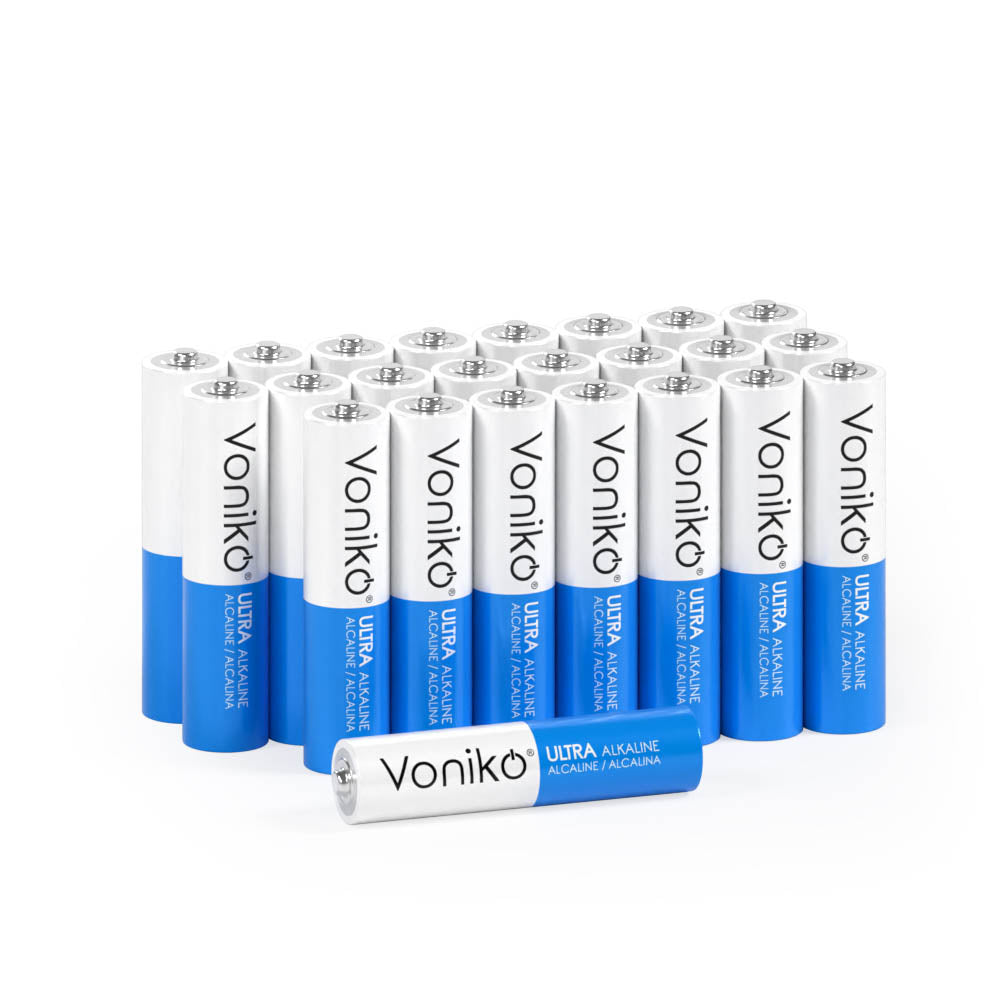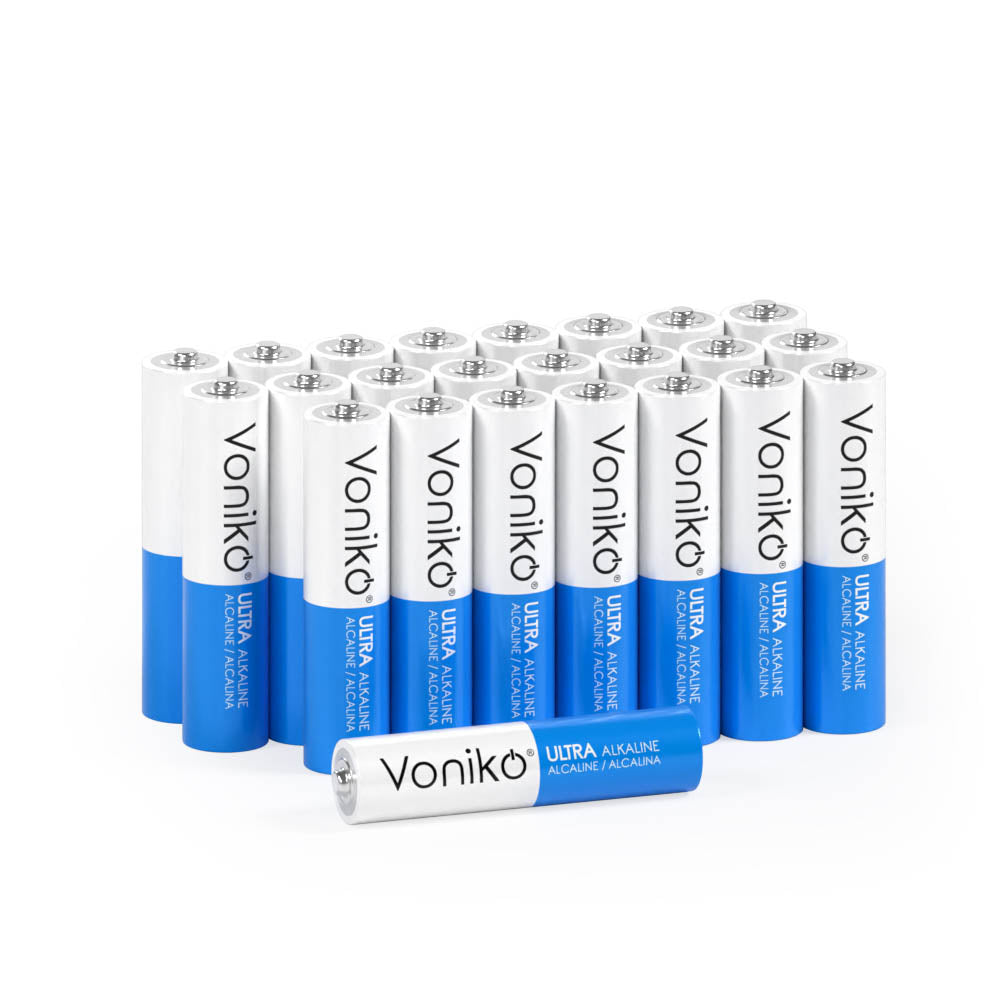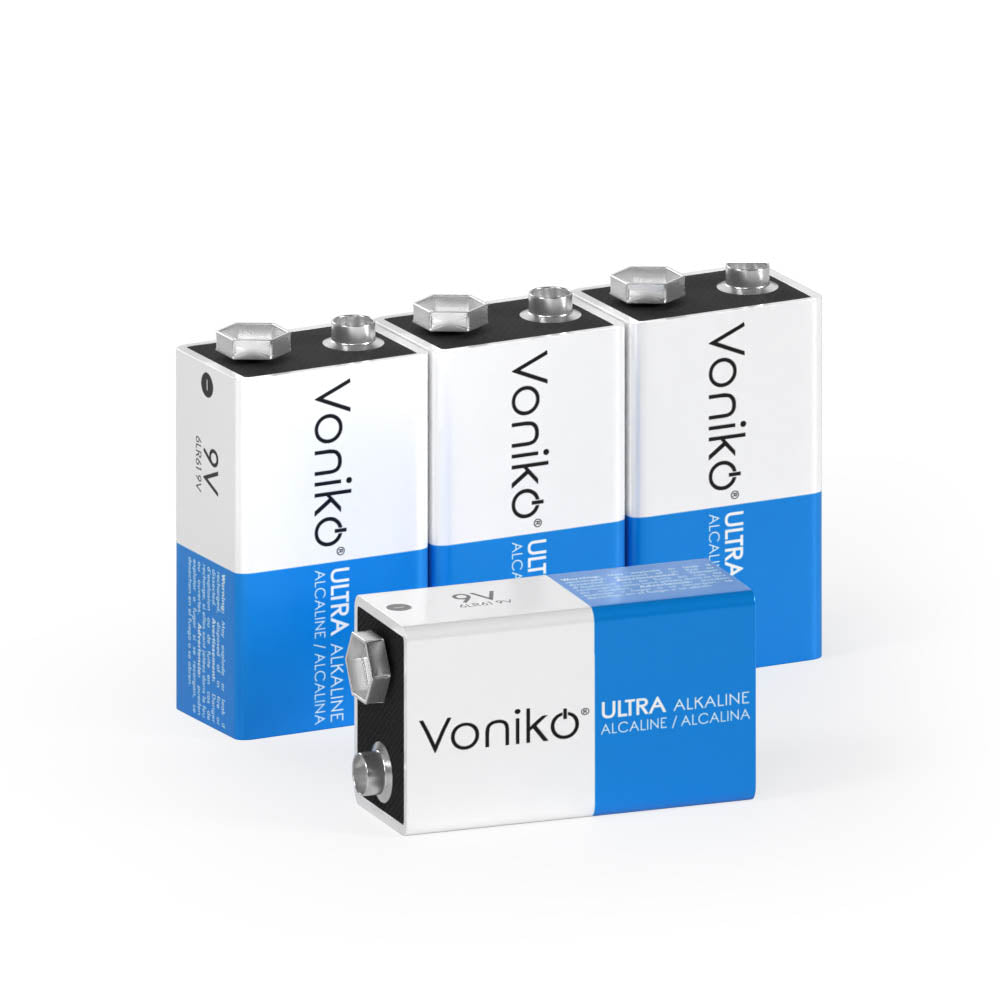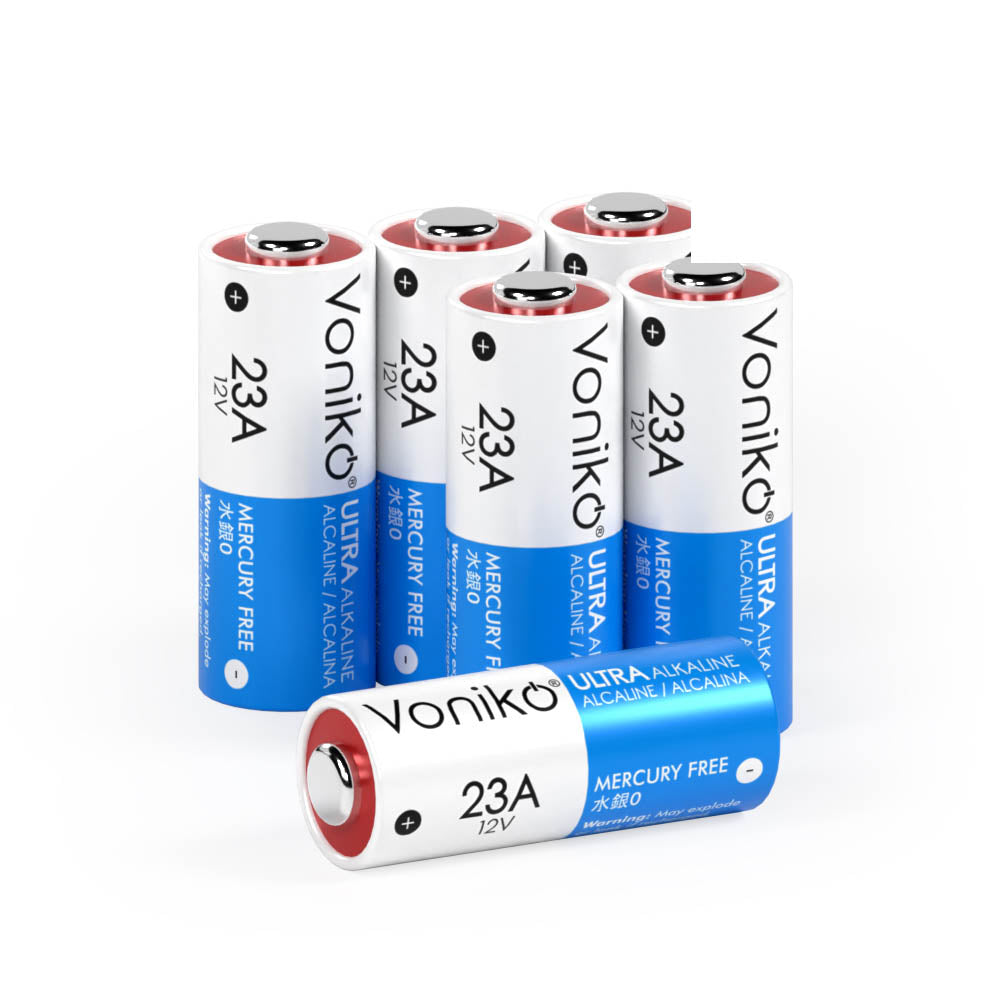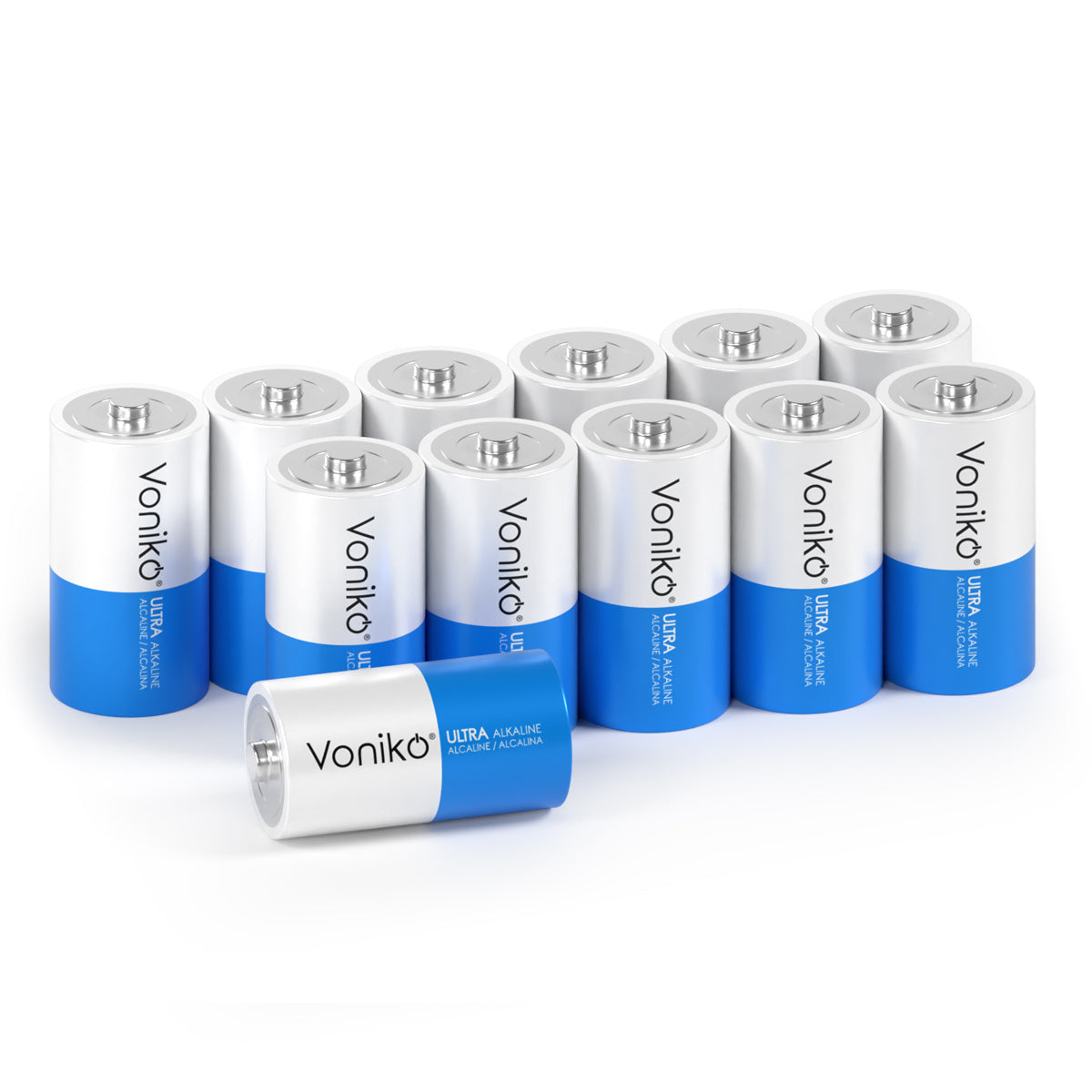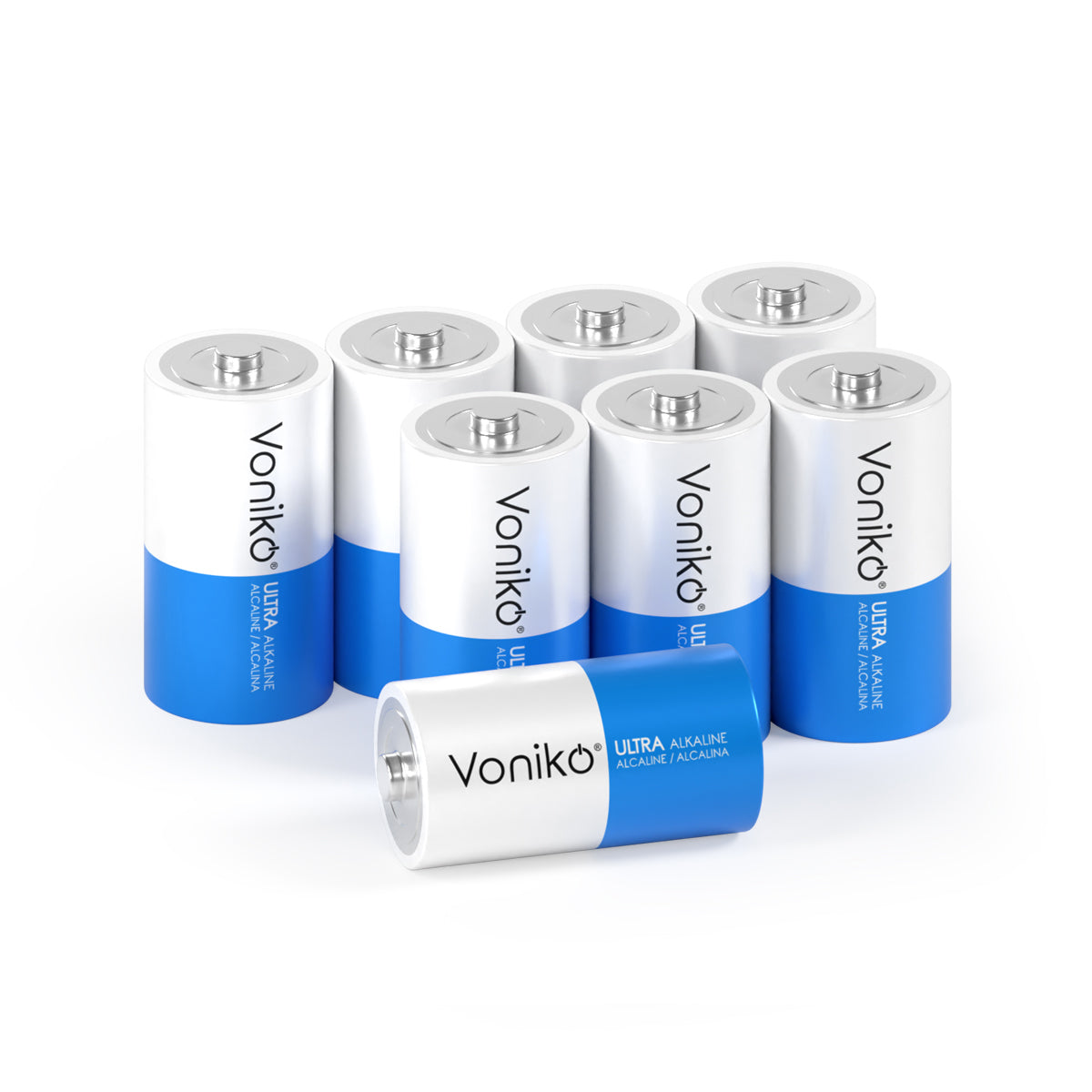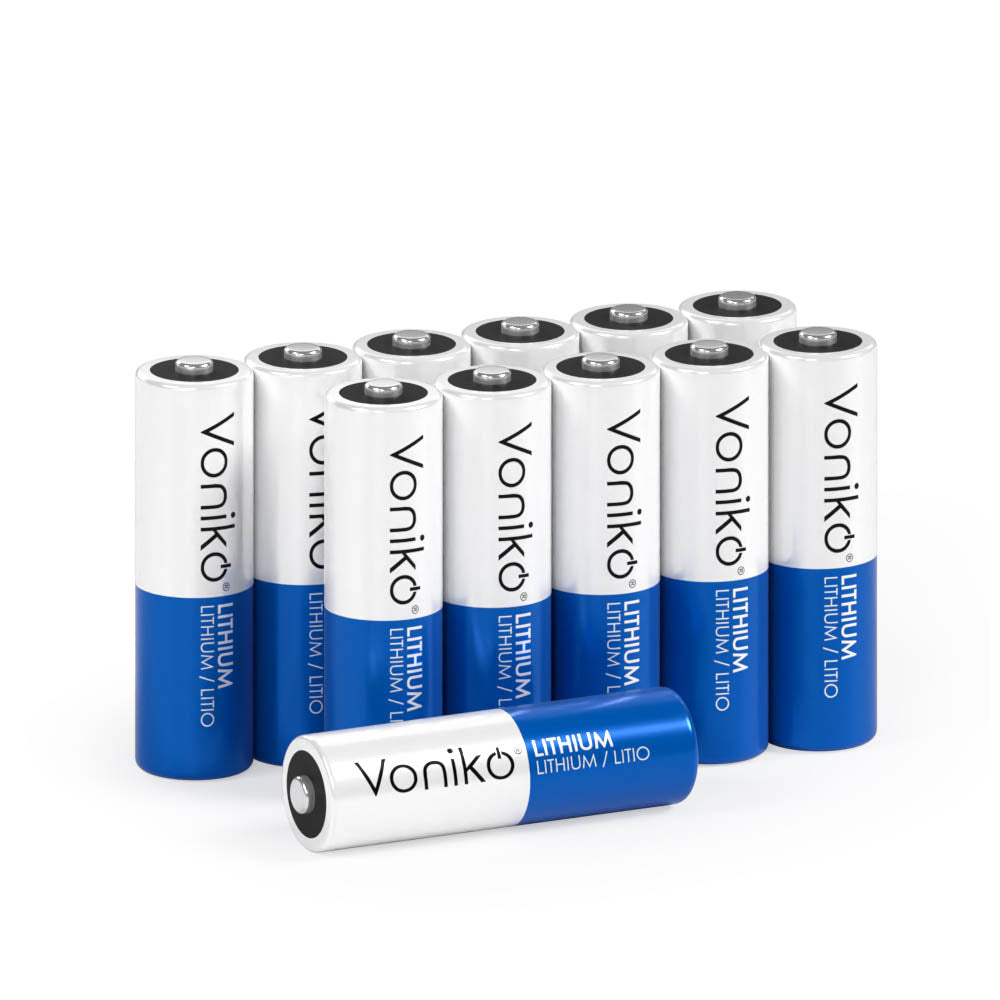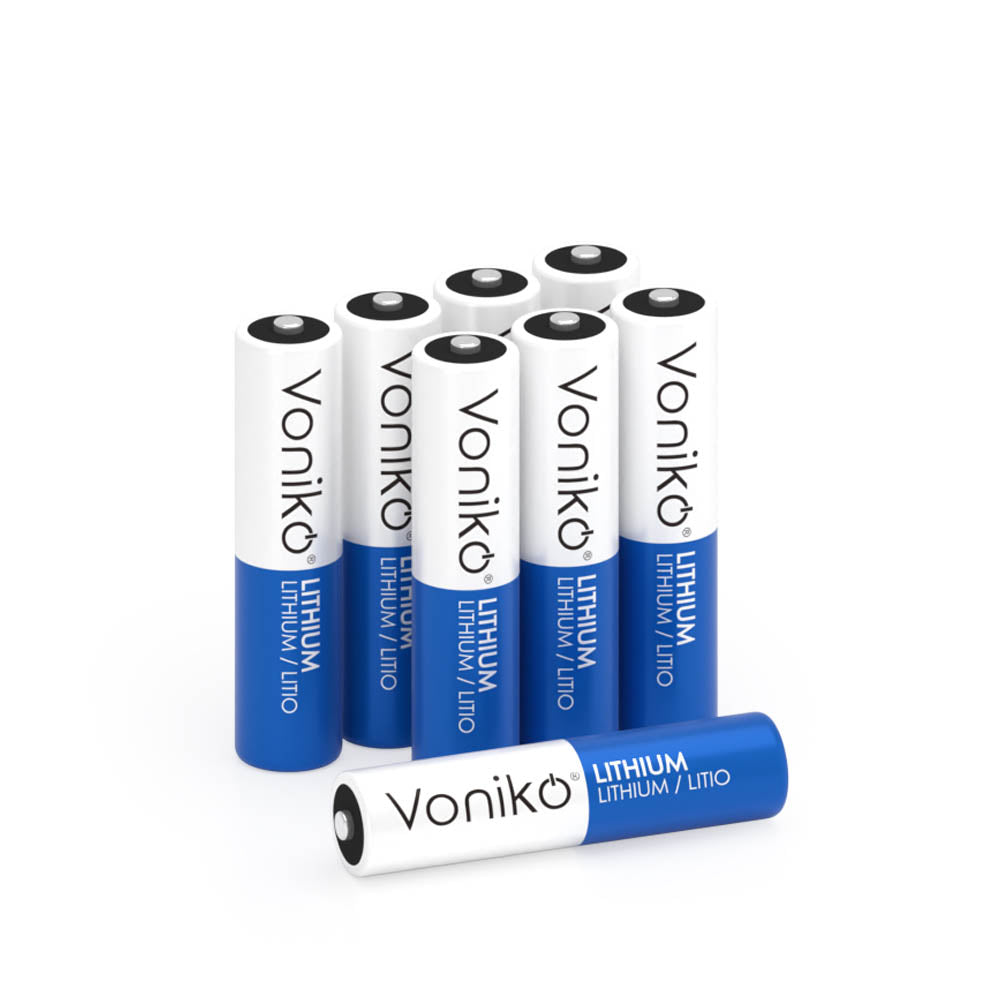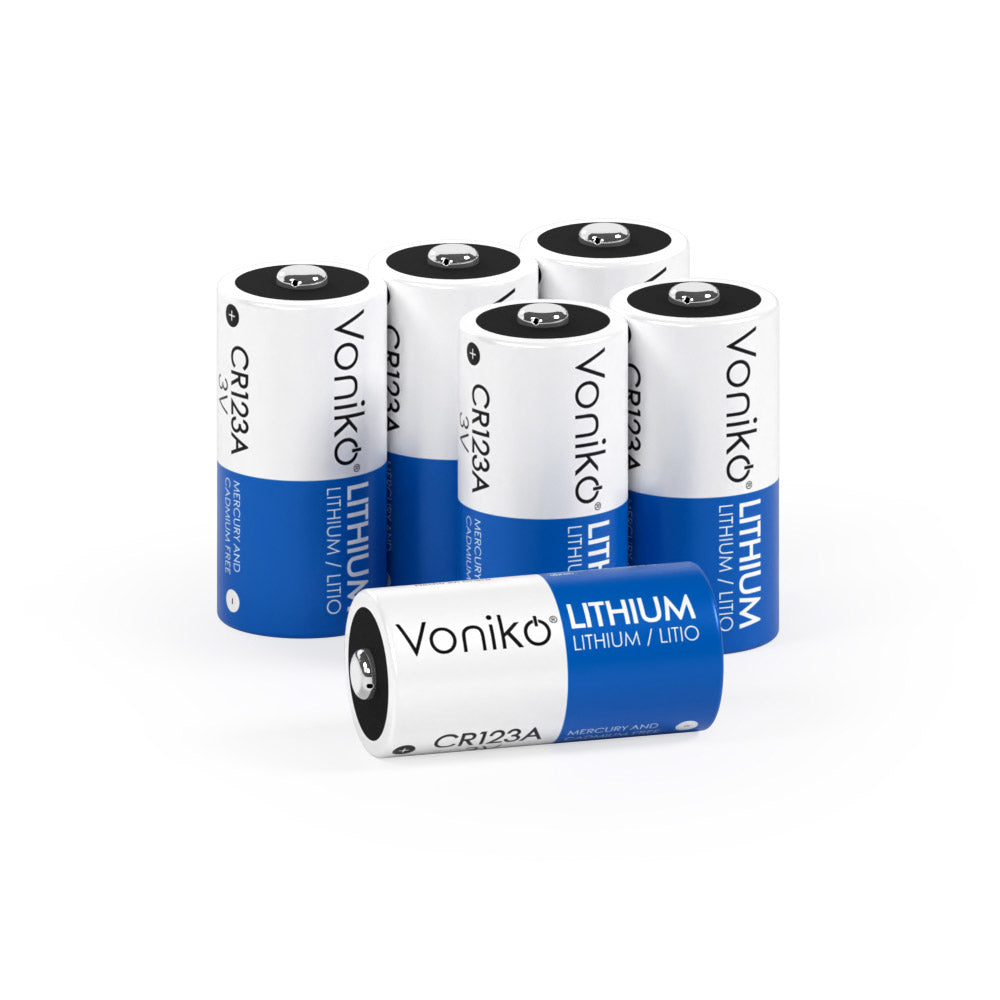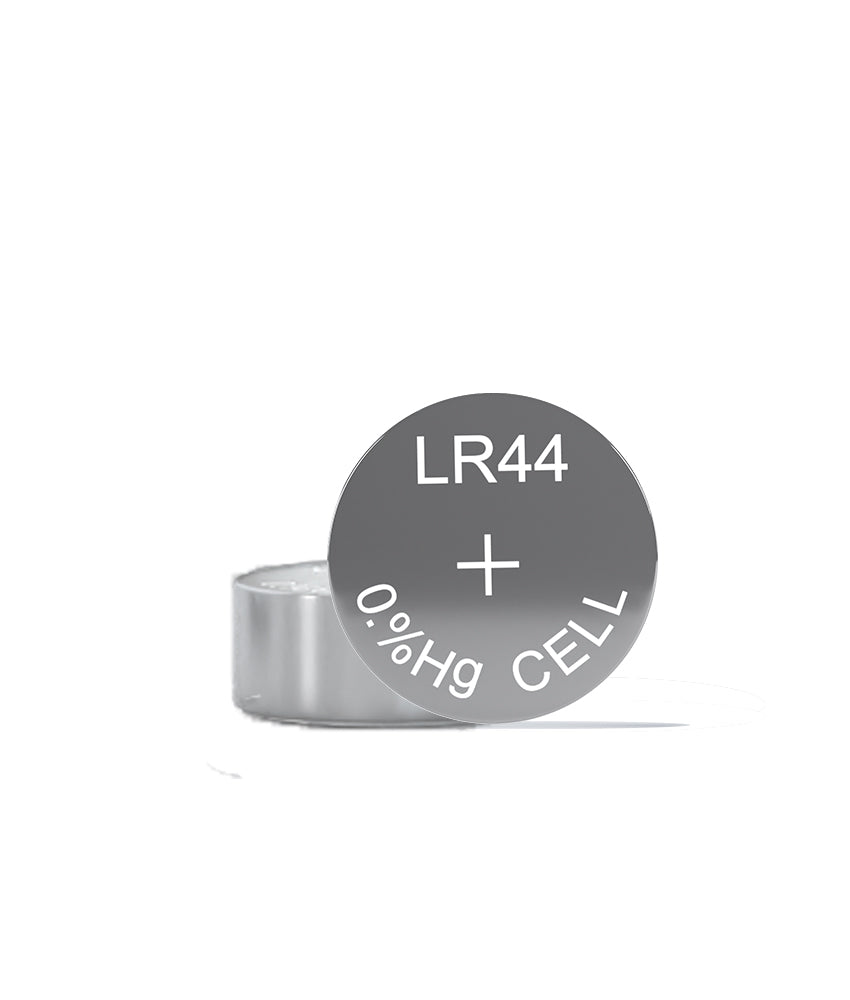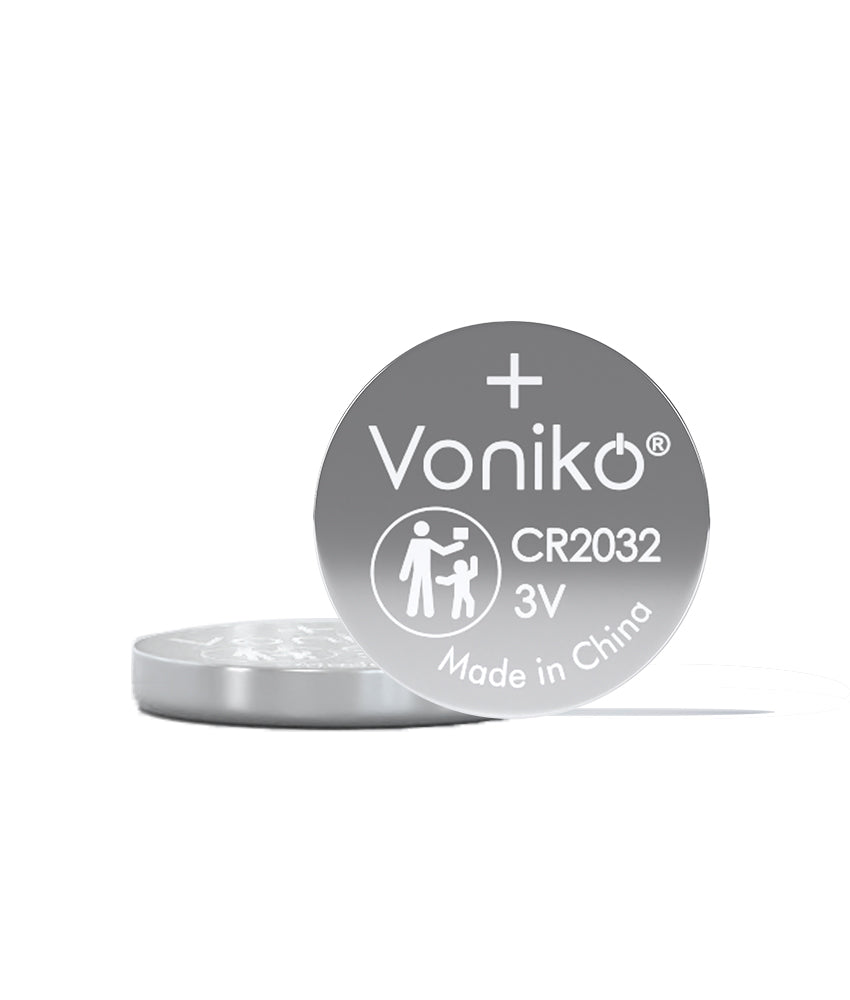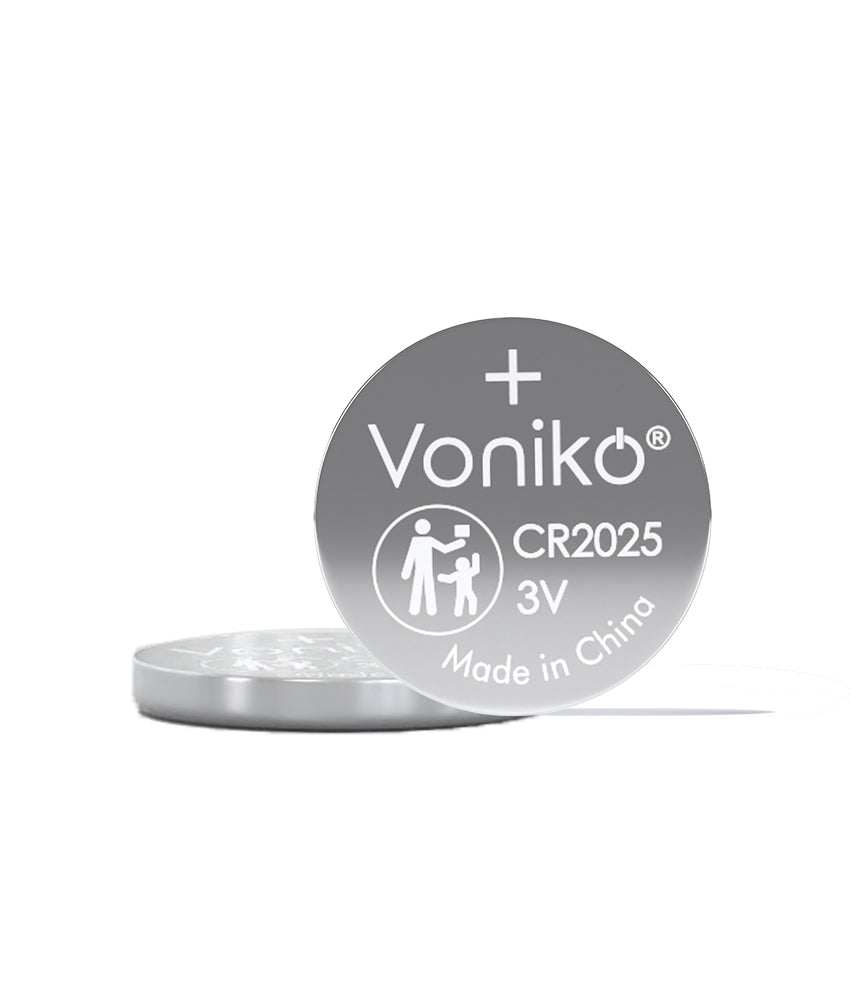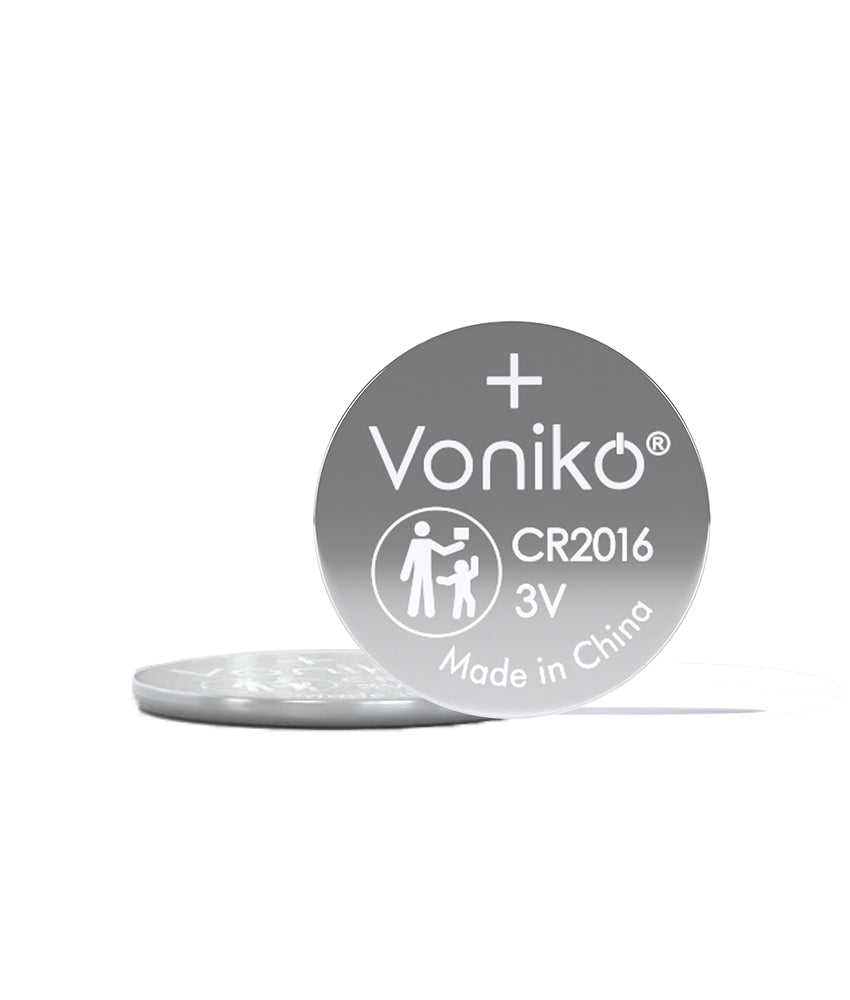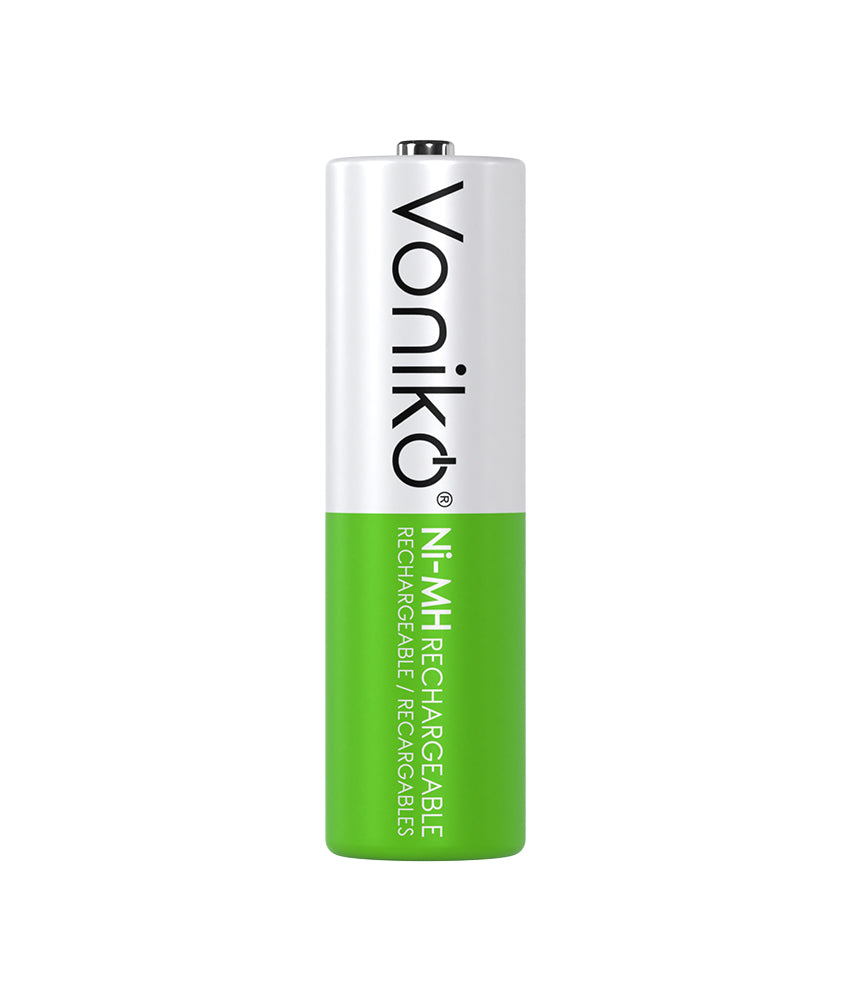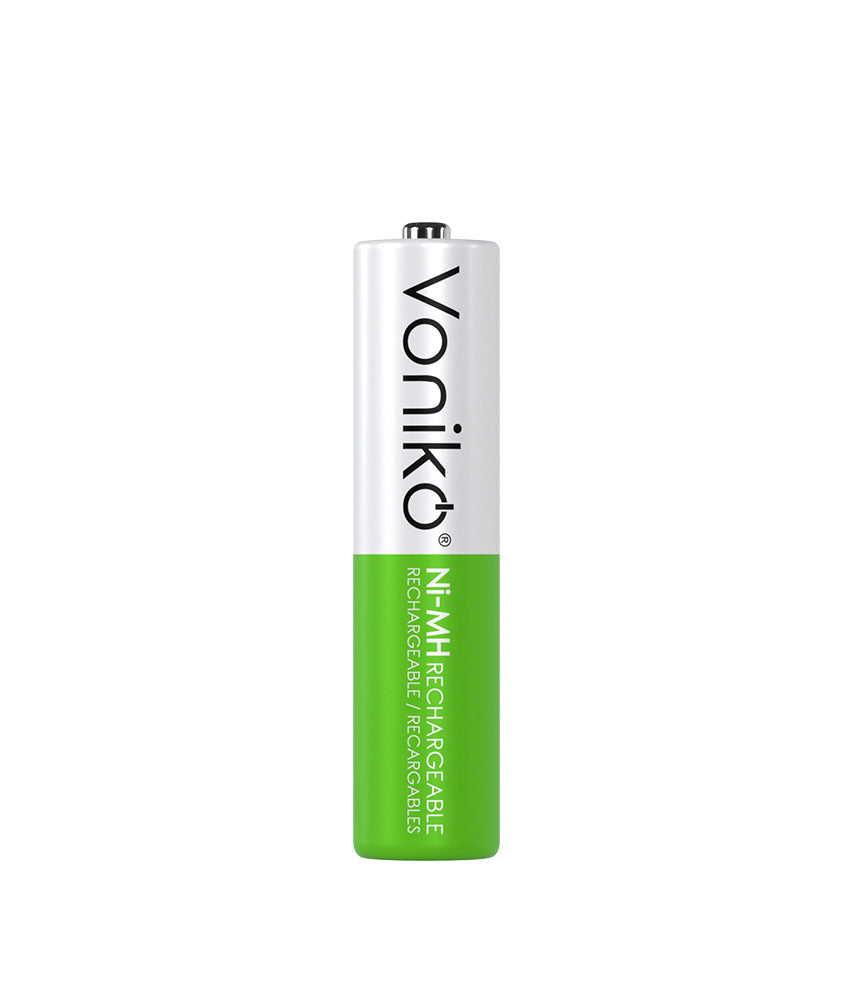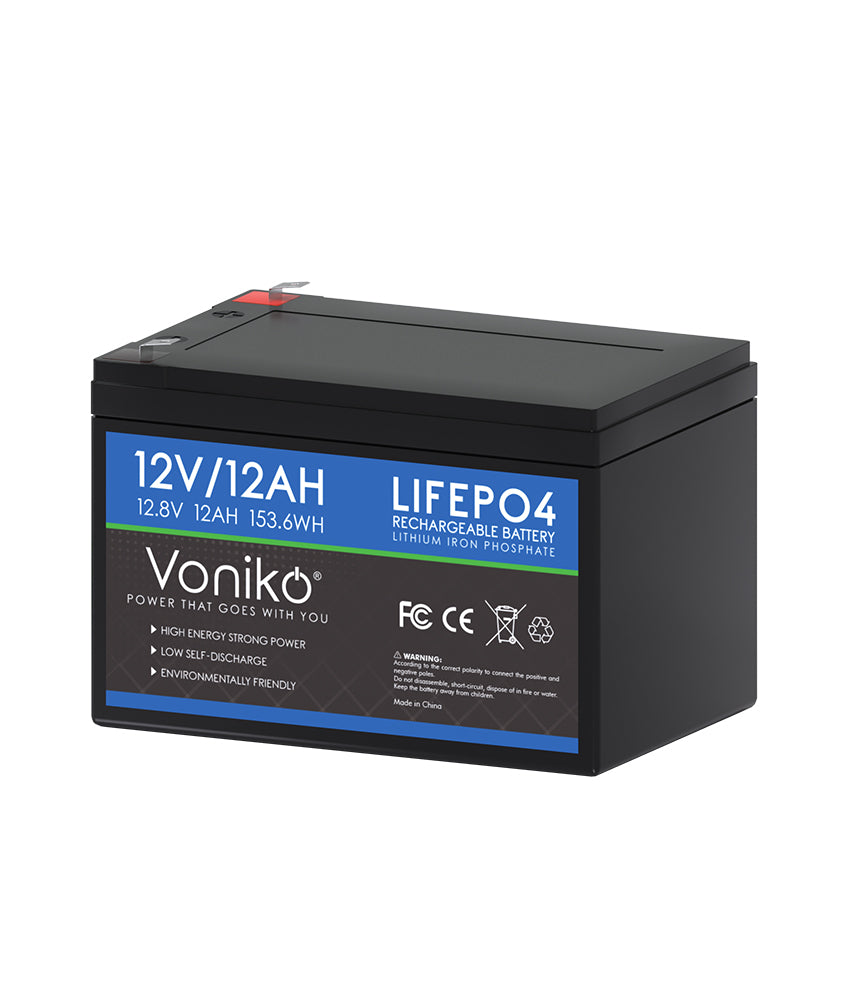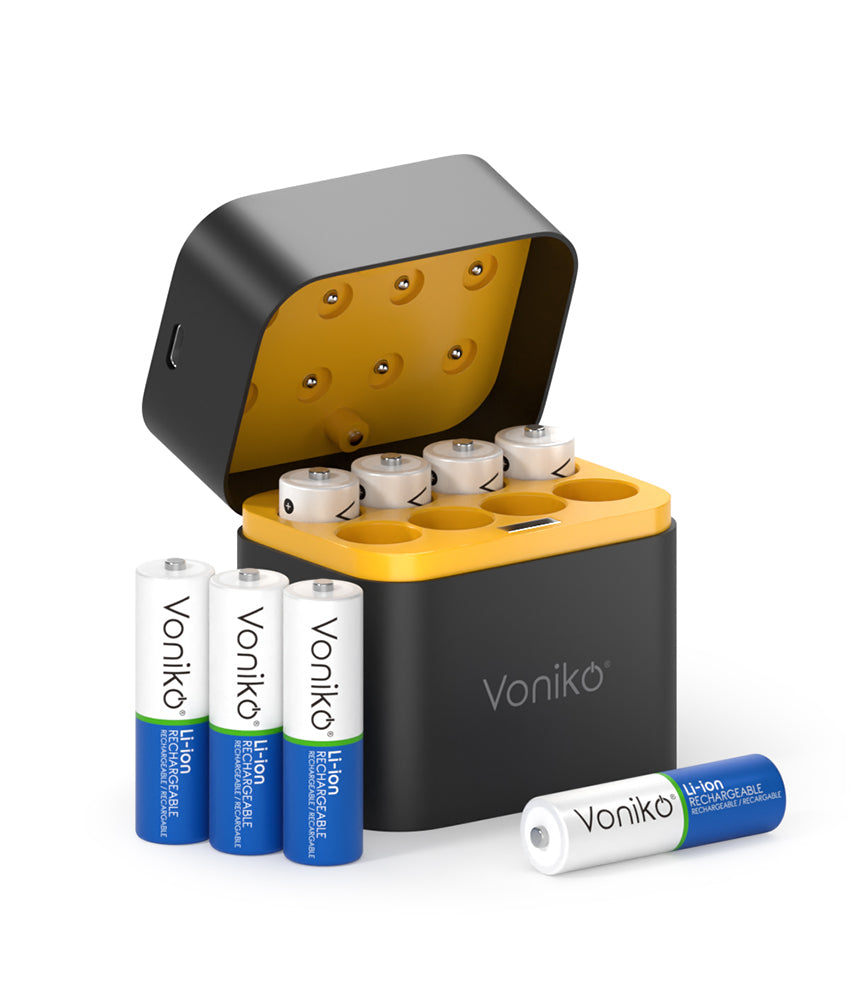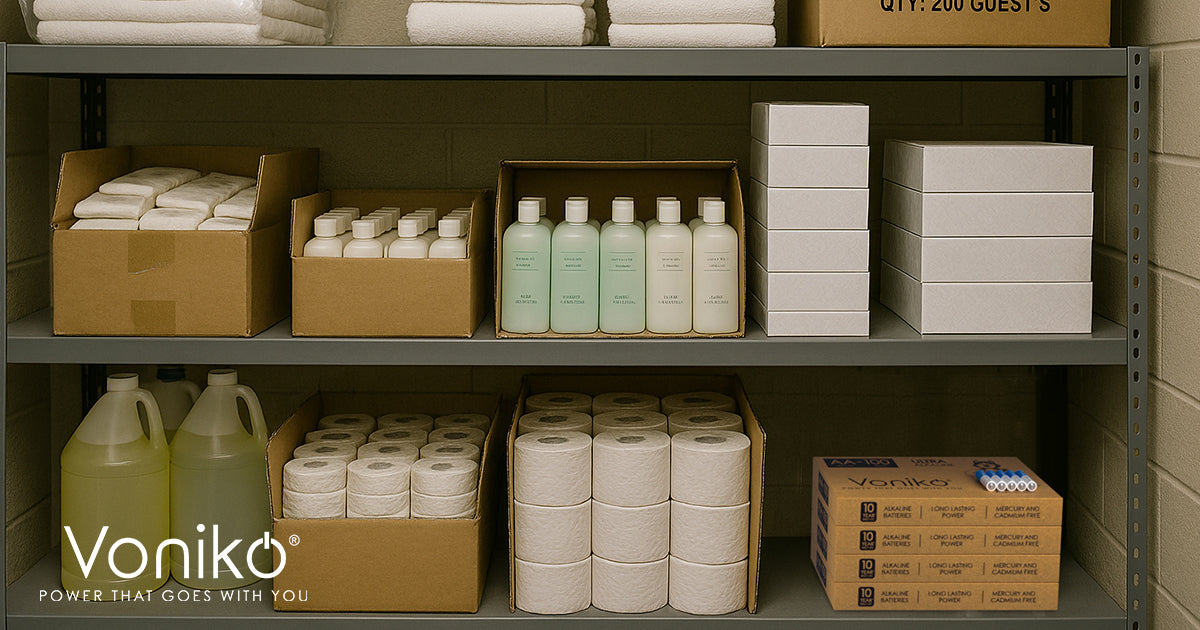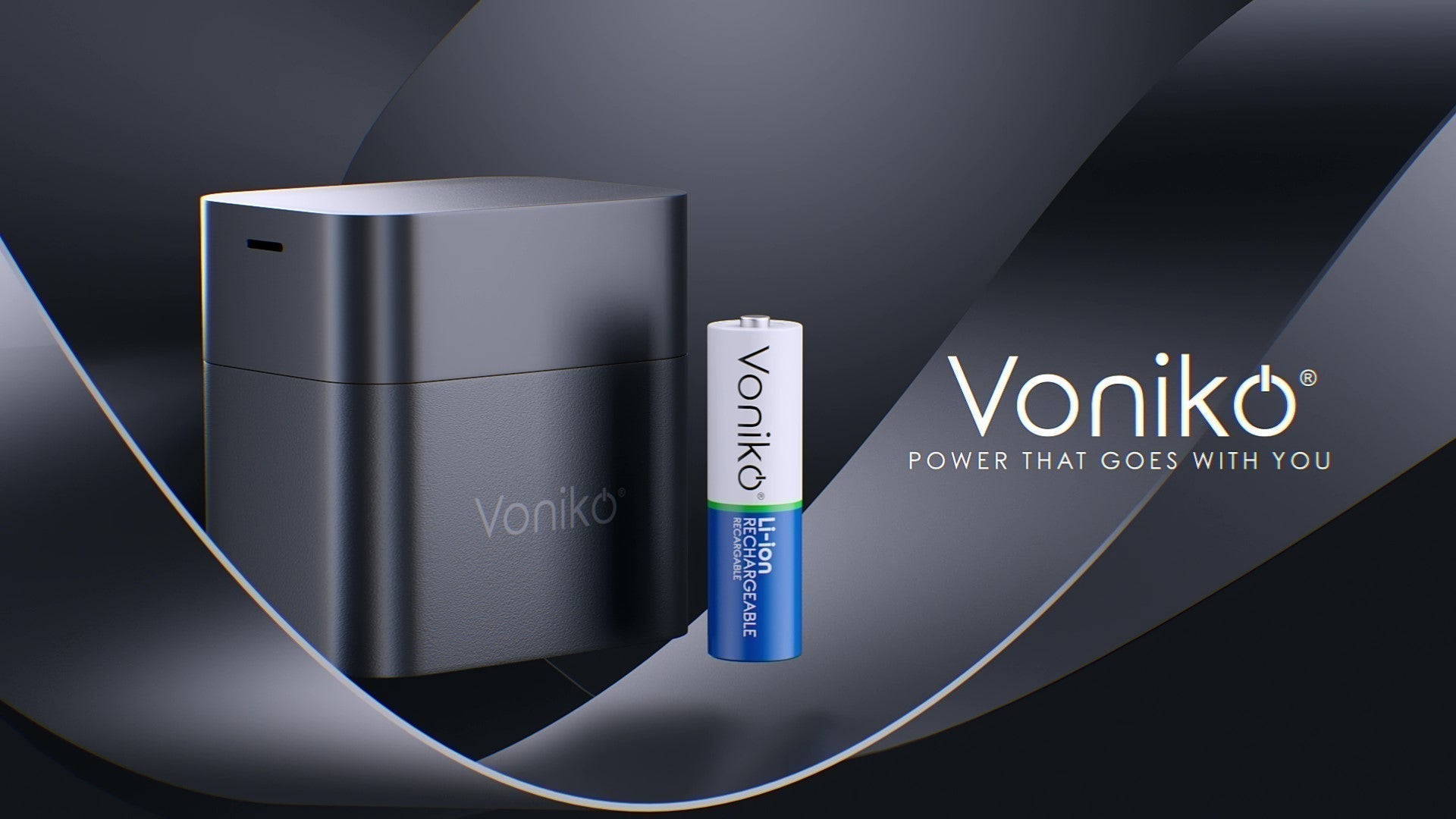Ever wondered if those batteries sitting in your drawer are still good to use? Whether you're stocking up for emergencies or managing inventory for your business, knowing how long batteries last in storage can save you time, money, and frustration. And as a manufacturer of batteries for decades, we know exactly how to let your batteries last long on your shelf.
The bottom line: most quality alkaline batteries last 5-10 years in storage, while lithium batteries can maintain their charge for 10-15 years under proper conditions. However, the actual lifespan depends heavily on storage conditions, battery chemistry, and manufacturing quality. Recent Stanford University research even suggests that real-world battery performance often exceeds laboratory predictions by 38-40%, meaning your batteries might last significantly longer than you expect.
Different battery types and their shelf life
Alkaline batteries last 5-10 years in storage. Premium brands like Voniko guarantee a 10-year shelf life for their alkaline battery lines, including C and D cells commonly used in flashlights and radios.
Lithium primary batteries offer superior longevity at 10-15 years, with minimal self-discharge and consistent performance from -40°F to 122°F. Their lithium metal chemistry provides exceptional stability for extreme conditions.
Coin cell batteries (like CR2032) typically provide 8-10 years of shelf life, making them ideal for watches, key fobs, and backup power applications.
The chemistry makes the difference: alkaline batteries use zinc and manganese dioxide, while lithium batteries employ lithium metal—explaining both the price premium and performance advantage of lithium options.
Shelf life versus operational lifespan explained
Here's where many people get confused: shelf life measures how long a battery retains its charge in storage, while operational lifespan refers to how long it powers your device during actual use. These are completely different metrics, and understanding the distinction helps you make better battery choices.
A CR2032 coin cell might have an 8-year shelf life but only power your car key fob for 4-5 years of normal use, or just one year in an Apple AirTag that continuously transmits location data. Similarly, an alkaline AA battery could sit in your drawer for 10 years but only run a digital camera for 1-3 hours due to the high power demands.
Battery expiration dates reflect the shelf life threshold—typically when the battery retains about 80% of its original capacity. Manufacturers determine these dates through accelerated aging tests and statistical analysis of self-discharge rates. The date isn't a sudden failure point; batteries often function beyond expiration but with reduced performance.
Environmental factors that impact battery longevity
Temperature reigns supreme as the most critical factor affecting battery life. Every 1°C increase in temperature between 30-40°C can reduce lithium battery lifespan by two months. At 45°C (113°F), degradation rates double compared to 25°C (77°F). Conversely, cold temperatures dramatically reduce capacity—at -30°C, batteries retain less than 50% of their rated capacity.
Humidity creates its own problems by enabling corrosion and internal chemical reactions. Optimal storage humidity hovers around 50% relative humidity, while levels above 90% cause significant degradation acceleration. High humidity enables water intrusion into batteries, producing hydrofluoric acid and corroding internal components.
Other environmental factors include vibration (which causes mechanical degradation), altitude effects (primarily through temperature changes), and dust interference with connections. These factors often interact synergistically—high temperature combined with high humidity creates the worst-case scenario for battery degradation.
Storage best practices for maximum shelf life
Proper storage can dramatically extend battery life beyond manufacturer specifications. Store batteries at 59-77°F (15-25°C) with 50% relative humidity in their original packaging. This prevents short-circuiting and maintains optimal chemical stability.
Temperature control is crucial—avoid attics, garages, and other areas with temperature extremes. Basements often provide ideal conditions if they're dry and temperature-stable. Never store batteries in metal containers or allow terminals to touch metal objects, as this can cause dangerous short-circuits.
For rechargeable lithium-ion batteries, store them at 40-60% charge level rather than fully charged or completely discharged. This minimizes chemical stress and extends calendar life. Check and recharge them every 3-6 months during extended storage periods.
Organize your storage with a first-in-first-out system, clearly labeling storage dates. This prevents older batteries from sitting unused while newer ones get depleted. Keep different battery types separated to prevent cross-contamination and potential chemical reactions.
How to test if your batteries are still good
Don't guess—test your batteries before critical use. A basic digital multimeter provides the most accurate reading for consumers. Set it to DC voltage and check against these benchmarks: AA/AAA alkaline batteries should read 1.5V when new, remain usable above 1.3V, and need replacement below 1.2V.
For more accurate assessment, load testing applies actual usage conditions. This involves applying a controlled load matching the battery's rated capacity and monitoring voltage drop over 10-15 seconds. Significant voltage drops indicate internal resistance issues and weak performance.
Visual inspection catches obvious problems before they become dangerous. Look for swelling, leakage, terminal corrosion (white or green powdery buildup), case damage, or any deformation. These signs indicate immediate replacement needs, as damaged batteries can leak caustic chemicals or even rupture.
Professional testing equipment provides detailed capacity measurements and internal resistance analysis, but consumer-grade multimeters handle most household needs effectively. Invest in a quality multimeter ($50-100) if you rely on batteries for critical applications.
Recent research reveals longer battery life than expected
Stanford University's groundbreaking 2024 research discovered that real-world battery performance exceeds laboratory predictions by 38-40%. The study tested 92 commercial lithium-ion batteries over two years and found that actual driving patterns—acceleration, regenerative braking, and parking—extend battery life compared to constant-current lab testing.
This research suggests that manufacturers' conservative shelf life estimates may actually underestimate real-world performance. The National Renewable Energy Laboratory developed AI-powered prediction models showing that multiple degradation mechanisms interact in complex ways, making single-factor predictions inadequate.
The implications are significant: your batteries might last considerably longer than advertised, especially under varied real-world conditions rather than the harsh constant-discharge testing used in laboratories.
Voniko's commitment to long-lasting power
Voniko stands behind their 10-year shelf life guarantee across all alkaline battery lines, matching or exceeding industry leaders like Duracell's 12-year guarantee. This commitment reflects advanced manufacturing processes based on over 30 years of Japanese technology and patented anti-leakage protection.
Conclusion
Store batteries at room temperature in low humidity, test them before critical use, and trust that modern battery technology often exceeds manufacturer specifications. With proper care and quality products, your batteries will be ready when you need them most—whether that's during a power outage, an emergency, or simply keeping your favorite devices running smoothly.

